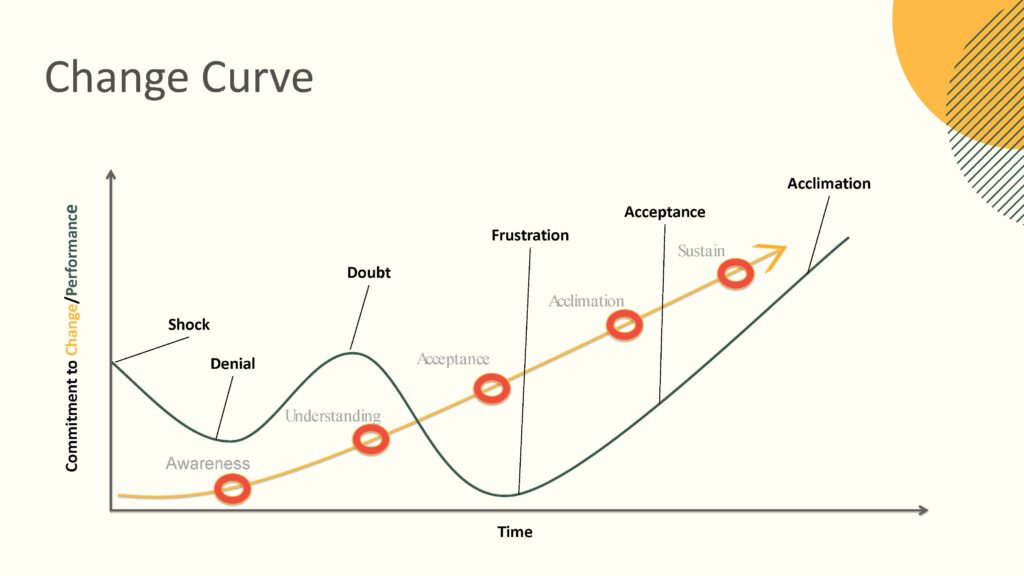
By: Mary Beth Oakes, CEO & Owner
We are told that change is hard.
At Business Furniture, we help our clients navigate workplace change every day, so it’s ironic that I could personally forget how hard change is. I suppose I sometimes forget because I happen to be a leader who sees the future and gets very excited, often moving quickly and with such conviction, that I just forget that change is not easy for everyone involved.
Business Furniture’s showroom is an actual working showroom where our own employees work. As specialists in workplace strategy, we need to keep our showroom fresh and inspiring to the clients we serve. But we also must make sure that it also supports how our employees are working. Much like every other company, our in-person versus remote way of working has evolved over the past few years. We now have meetings where some employees are in-person and others are remote. We have some employees coming in three days a week, whereas others are still in every day. We decided to put ourselves in the client’s chair for a change and do some research on how our space is being utilized. Here is what we learned:
- On any given day there is a portion of our workspace that is unoccupied and underutilized because some portion of our employees are working, but either from home or another space.
- Employees who are in the office want more dedicated spaces for privacy when they need them.
- When they are in the office, employees want available spaces where they could easily connect with their own team and other teams. Currently there are too few spaces to accommodate teams.
- We need more spaces for meetings that have video capabilities to engage those who are not in person.
Our workplace design team took our learnings and created a new space plan featuring assigned team neighborhoods that have unassigned seating. Each neighborhood features an “ecosystem” of spaces to allow for both individual and collaborative work. Each neighborhood is dedicated to one team, but it’s not a gated community, so teams can overflow into each other’s neighborhoods. Our goal was to create a workplace that is truly flexible, providing the variety of spaces needed and better utilizing the spaces we have.
What we have created sounds like a utopia compared to now and I believe it will be great for everyone when we move in on April 4th. However, for some of our teams, it does require a BIG change from how we are working today. THIS is where I may have overlooked the obvious. Even though our team helps other companies transform and change their physical space every day, most of our own team, does not get involved with the emotions related to change. Physically we know how to make this change happen for ourselves, but navigating through the emotions has not been easy. The connection to physical space is emotional because it’s where we spend our time.
So, as a leader, I am slowing down and trying to stay engaged with employees as they are experiencing the range of emotions. Feelings of frustration and being overwhelmed. Feelings of being unsure about what working this way will really be like. Maybe even feelings of being doubtful about the change. At times, it can be tempting to back down from the need to change and claim that it is too difficult. I have to remind myself of what I have learned through the years, all of these feelings are normal and to be expected. I also have to remain confident in our team’s ability to persevere and overcome challenges.
How can our experience help someone else? Here’s what I have observed as I have watched my team go through a BIG change:
- Articulating a CLEAR WHY for the change is crucial. It doesn’t eliminate the emotions that people feel, but it does provide a good foundation for understanding and acceptance.
- Engaging your TEAM throughout the process of creating change really does matter.
- Taking the time to LISTEN to concerns, and addressing potential challenges is also important.
- Encouraging your team to imagine the POSSIBILITIES resulting from the change is also helpful.
- Remembering that feelings are REAL, and giving people time to process is critical.
I am looking forward to watching our team thrive and adapt innovating ways of working.
Be the first to comment